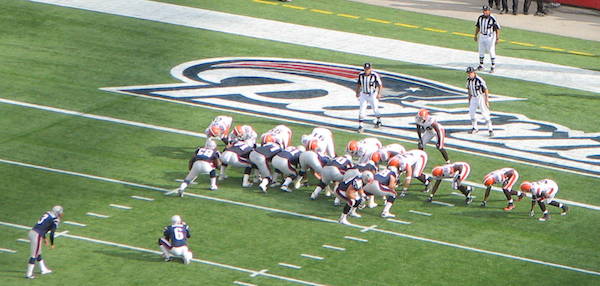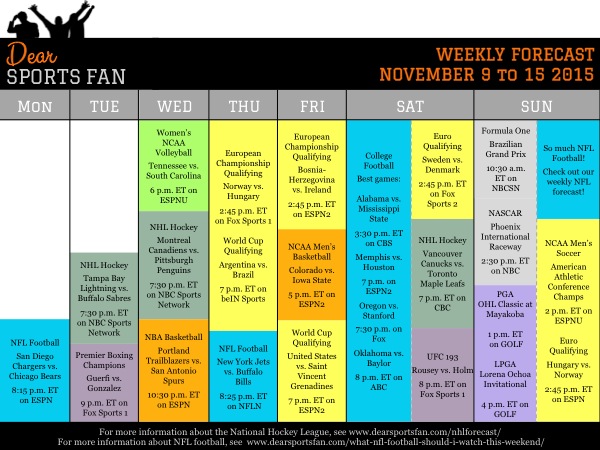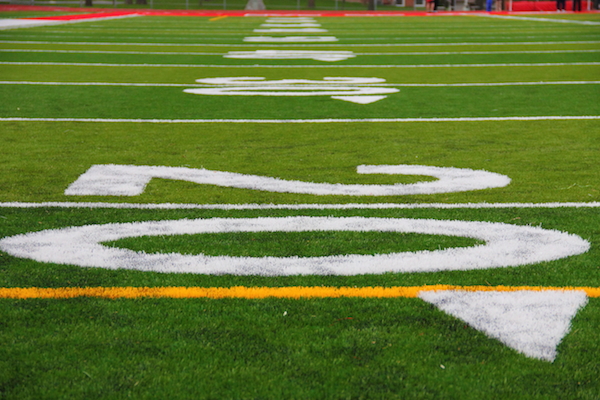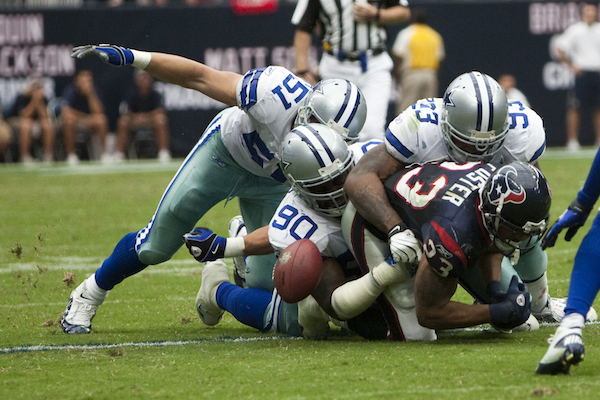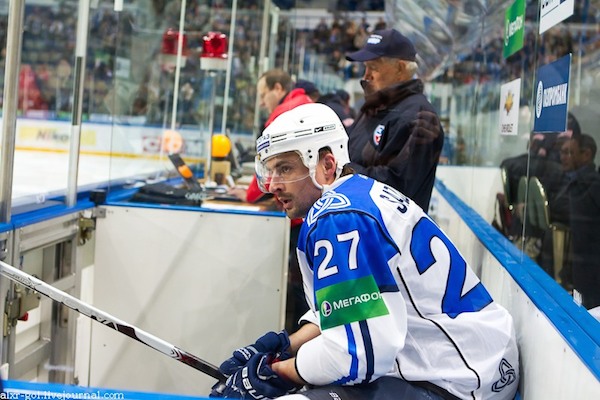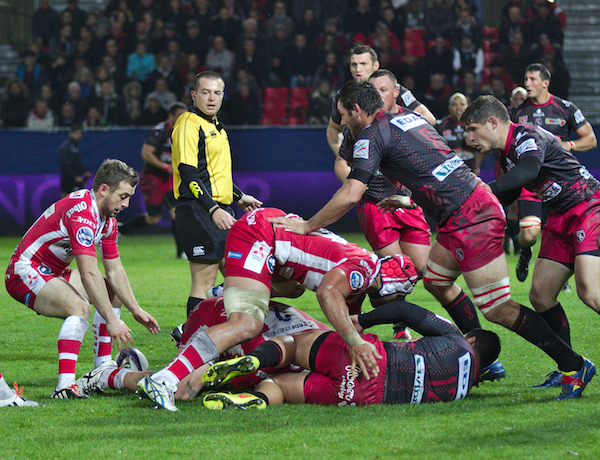Sports talk is frequently used as a common language but it’s far from universal. If you’re someone who doesn’t follow or even understand sports, you can find yourself at a disadvantage in common small-talk situations like in an elevator, waiting for a bus, sitting at a bar, or around the proverbial water cooler at work. Even if you are a sports fan, it’s impossible to watch everything and know everything. To help in these situations, we provide lines to use when engaged in a conversation about all of the high profile sporting events of the day, plus explanations of what they mean.
NFL Football
Line: Seems like the Bills just have the Dolphins number.
What it means: The Bills and Dolphins are in the same division, the AFC East division. This means that they play each other twice every year, which makes the games simultaneously more important and more tactically challenging. It’s hard to play a team that knows your tactics as well as a divisional rival does. This familiarity makes it possible, sometimes, for a team to seem like they’ve solved another team the way you or I would solve an easy math problem. So far this year, the Bills have beaten the Dolphins 41-14 and 33-17.
Line: The Panthers survived, but if Rodgers had had five more minutes…
What it means: If you hadn’t followed this game (or had lines written for you by someone who did) you would have thought the story was the Panthers retaining their undefeated record by outscoring the Packers in a close game. That’s not really the story. The real story is that the Panthers got up to a big lead and then seemed unable to even slow the Packers down as they launched a furious comeback attempt behind their star quarterback, Aaron Rodgers. The Packers come very close to tying the game and given the momentum of the game, if it had been just a little longer, it seems like they would have found a way to do it.
Line: Surprisingly entertaining for a game featuring Blake Bortles and Ryan Fitzpatrick.
What it means: Neither of the quarterbacks in this game are particularly well thought of among football fans. The Jaguars’ Blake Bortles is a young quarterback who has shown some potential in his time in the league but very little performance. The Jets’ Ryan Fitzpatrick is a veteran quarterback who has played well for several different teams but never well enough to secure a starting job for very long. Despite their lack of star power, both quarterbacks played well today and helped make this a good back-and-forth football game.
Line: Justice was served in this win, but the bigger question is when Teddy Bridgewater can come back.
What it means: The Vikings quarterback, Teddy Bridgewater, was knocked out of the game with a suspected head injury after being knocked unconscious a hit by a St. Louis Rams defensive player that most people thought was dirty. Bridgewater had already started sliding feet first when he was hit. When a quarterback (by rule any player but in reality only quarterbacks do this) starts to slide feet first, this signals that he’s voluntarily “giving himself up” or stopping the play. Once he’s started sliding, no one is allowed to hit him. In this game, someone did, and the results were pretty brutal.
Line: Another Pats win, but how many players can they afford to lose?
What it means: The Patriots are a perfect 8-0 so far this year, but they finished this game having lost their best running back, Dion Lewis, to a scary non-contact knee injury, and were reduced to playing a tight end in their offensive line because of all of the injuries they’ve suffered in that unit. It’s incredibly impressive that they can overcome so many injuries to key players and still win so easily, but fans of the Patriots (and maybe enemies too) suspect there’s a limit to how long the trend can continue.
Line: Maybe the Saints would be better in the NBA?
What it means: The New Orleans Saints have scored an average of 34.5 points over the past four games, which is an absurdly high number for an NFL football team (okay, maybe not basketball high, but give me and yourself some poetic license!) but they’ve allowed an average of 31.25 points over the same period. That’s also an absurdly high number, and their shoddy defense is the reason why they lost this game today to the not-very-good Titans.
Line: Two questions: how good will these Raiders be in a couple years and how can the Steelers survive another injury to Big Ben?
What it means: Even in losing, the Oakland Raiders continued to impress neutral football fans and convince us that they’re a young team with limitless potential. The Steelers were built to win now, but they lost their star quarterback, Ben Roethlisberger, nicknamed Big Ben, who missed four games with a knee injury earlier this year and left this game with a foot injury. The Steelers are a markedly worse team without Roethlisberger. They found a way to win without him before, but that was before they lost their best running back for the year due to torn ligaments in his knee. It will be quite a feat if they can win without him some more.
Line: Either the Giants aren’t very good or the Buccaneers aren’t very bad — this game was closer than it looks.
What it means: At one point in the fourth quarter, the score was 20-18. Then the Giants scored two field goals — to make their lead 8, which is still a single possession game — before they scored a touchdown on the final play of the game. That last touchdown makes the score seem like one you’d find in a game with an obvious and convincing winner. This game didn’t really have that.
Line: Not sure the fire everyone the week before the London game gambit is going to work for Jim Caldwell after this showing.
What it means: The London game, which is always followed by a bye week, has become an opportune moment for teams to fire their coaches. As if he knew that might be a possibility and wanted to cut it off at the pass, the Lions head coach fired most of his offensive staff the week before this game. After losing so badly to the Chiefs, this almost blatant attempt to buy himself some time, may not work. Head Coach Jim Caldwell might get fired anyway.
Line: It’s hard to figure out what’s happening to the Falcons — no major injuries, no controversies, just sudden badness.
What it means: The Falcons won their first five games. And then lost three of the next four, including this one. Usually, when that type of fall from grace happens, there’s a clear reason, like an injury to a major player or several minor ones, or some kind of on the field or off the field controversy. None of these factors are present, at least that we know of, with the Falcons. They were good and then they sucked. It’s curious and we don’t have a good answer about why.
Line: It may be too late for fantasy owners, but it’s not too late for the Colts, especially not in their stinky division!
What it means: The Colts players were popular fantasy commodities (in case you want or feel you need a primer on how fantasy football works, we’ve got one!) and have spent most of the season disappointing their fantasy owners by not accumulating good statistics in their real world games. They played so well today, against what many people think is the league’s best defense, that they looked like a completely different team. It may be too late for fantasy owners who relied on the Colts players for their fantasy teams (because the fantasy regular season is about 3/4 of the way done) but it’s not too late for the Colts to make the playoffs in the real NFL. This is particularly true because, despite their struggles, they’re still in first place of their division. Every other team in their division has lost more than they’ve won.
Line: And Tony Romo’s MVP case only gets stronger.
What it means: Tony Romo is the Cowboys starting quarterback, or at least he was until the second week of the season when he broke his collarbone. Since then, he’s been recuperating and confined to the sideline, and his team has lost six straight games. Saying he should be voted the league’s Most Valuable Player (MVP) is a little bit of a joke, since the award is really given to the player who has had the best year, for the best team (usually a quarterback), not someone who has had his value proven by getting injured and watching his team completely sink (and stink).

